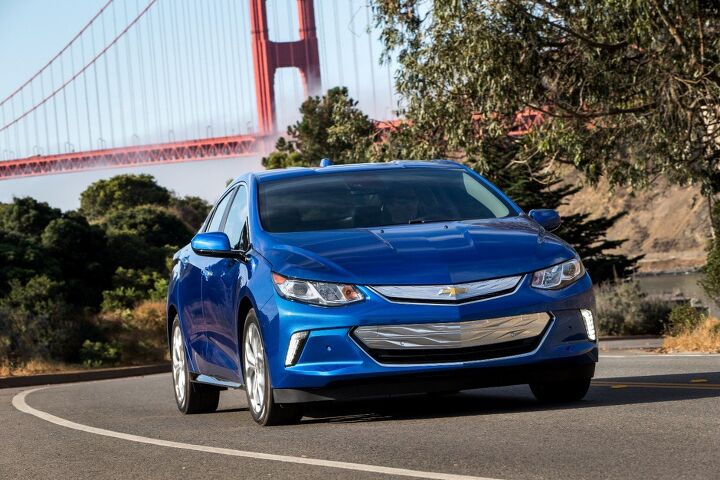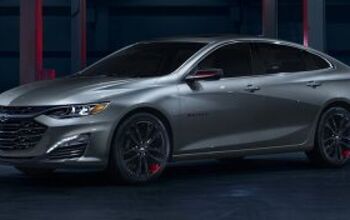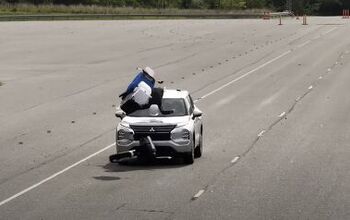Chevrolet Volt's Discontinuation Leaves Battery Plant Employees Out of a Job

The vehicle they provide batteries for has less than three months to live, and this week brought news to 50 workers at General Motors’ Brownstown Battery plant that their positions are even more short-lived. In a filing with the state of Michigan, GM said it will cut 37 hourly and 13 salaried workers at the Detroit-area facility, adding an extra dollop of job losses to the mass culling announced late last month.
If the idea of owning a plug-in hybrid with real electric range tickles your fancy, your time’s running out fast.
GM plans to axe the battery employees in February, Automotive News reports, with the Volt itself leaving this earth the following month. The plant also makes batteries for other GM vehicles, including the doomed mild hybrid Buick LaCrosse. After their departure, Brownstown’s staffing levels should sit at 66.
Also in February, GM plans to lay off nearly 700 employees at the Volt’s home — Detroit-Hamtramck Assembly, builder of the LaCrosse, Chevrolet Impala, and Cadillac CT6. The LaCrosse follows the Volt to the grave in March, while a roughly equal number of employees will continue producing the Impala and CT6 until June.
Last week, an embattled GM announced some 2,800 workers at its soon-to-be-mothballed assembly plants were eligible for jobs at other plants.
The Volt first appeared in late 2010 as a 2011 model; at the time, the innovative model served as a flagbearer for the “New GM” — a technologically advanced powerhouse with its finger on the pulse of the future. Indeed, the Volt was in many ways the perfect “electric vehicle,” especially in second-generation form. Its 53 miles of all-electric range accomodated most commutes, while the 1.5-liter four-cylinder generator eliminated range anxiety and made road trips a breeze. The automaker even upgraded the model for 2019, adding a power driver’s seat and quicker charging capability.
Despite the presence of the 238-mile, fully electric Chevrolet Bolt, GM felt the Volt could still serve as a nearly gas-free alternative to conventional vehicles. Faster charging would encourage owners to use it as an EV, the automaker said. Alas, cost-cutting got in the way.
Volt sales peaked in 2016 when GM sold 24,738 of them in the United States. 2012 and 2012 figures came close to this high water mark, with sales of 23,461 and 23,094 units, respectively. While the model faltered somewhat over the past two years (the presidential election can be credited for a surge in late-2016 sales from buyers hoping to collect a seemingly endangered EV tax credit), third-quarter 2018 sales numbers beat those from a year earlier.
Given that the feds still offer the credit, it’s looking like last-chance buyers might send the Volt out on a high note.
[Image: General Motors]

More by Steph Willems
Latest Car Reviews
Read moreLatest Product Reviews
Read moreRecent Comments
- Kwik_Shift_Pro4X Congestion pricing is the best idea since pay toilets. /S🙄
- EBFlex Amazing they finally made a good decision in NY. Golf clap
- EBFlex Not at all. The solution to congestion is to make more lanes for vehicles. No bike lanes, no trains, none of it. Another solution is to make your public transit a place people actually want to be and not a septic tank of violent criminals and drug users.
- Firehawk I had two of these with lean and misfire codes. He changed the plugs you say??? has he inspected them? One of the two times it was a brand new plug that cracked. The other lean condition was some random threaded hole on the bottom of the throttle body that needed to be closed up, whatever was in there came out and was letting a lot of unmetered air into the intake. I love the Mark VIIIs my 97 and 98 would still be here today if it weren't for other drivers and their proclivity for hitting things. 97 was rear ended and totaled the 98 was t-boned while parked. Moved on to bigger Lincolns. Got an MKT and Aviator now.
- Seth1065 Hell No, why should I as a driver have to pay for the subway repairs? I already pay over $250 a month in tolls to get into NYC, ( all of it not just Midtown) ( do not tell me to move closer I am less than 20 miles from midtown) the roads are crap as it is now , the trains are not much better and I have no faith in the port Authority ( referred around metro NY as the 51 state) to spend the money properly. They want no drivers in midtown , they already allowed over a 1000 parking spots to be taken up by restaurants out door dining. Most folks can not afford to live in midtown ( and the ones who can may not want to live in a city) but the city wants its workers back in their office buildings. People need to drive into the city for various reasons and they work there, want to eat at a restaurant trucks need to deliver food there, they will pay and pass teh bill on to the restaurant who will pass it on to the consumer. I did laugh yesterday when I read NYC has already spent a half billion dollars on the trackers. BTW I am pretty sure port authority personnel do not pay for their expats so who should they car. Show me a plan where everyone pays for this , train riders, subway riders, car drivers and I may agree but until then I will just not go to the city as often. I do think this will pass around Nov. 8 after election day. and a train to midtown from LGA , yeah that will happen , cost ten billion and 90 years. they can not even finish the 2 ave subway and that's been going on about 75 years at least.


































Comments
Join the conversation
@geozinger: "if the car didn’t have to use the ICE to haul around the battery, the ICE fuel mileage could be better. My comment isn’t entirely about weight, although it would have an effect on the ICE operation end of the car." Regeneration does not go away just because a hybrid is using the gas engine. I think we need to look at this again. What hurts mileage? Frontal area. For given equivalent cars, this will be the same. Rolling resistance. A heavier car will have very slightly more rolling resistance from the tires and bearings. Lifting extra weight up hills. This hurts an ice-only car because the additional energy is lost. Getting extra weight up to speed. This hurts an ice-only car because the additional energy is lost. It may seem that a hybrid does not recapture as much energy as was used to get it up to speed or up a hill. But that energy does not disappear. The laws of physics say so. It may have shown up as needing less application of the throttle to get down a less steep descent. It may have meant coming off the throttle sooner which approaching a stop. My hybrid gets the same apparent mileage regardless of the load. Theoretically it should be very slightly less due to friction and the factors mentioned below.Substitute a couple of passengers for another ice, and the mileage should stay the same. Four caveats: Hybrids can only regenerate a certain rate. Exceed that rate and the normal brakes engage. Which wastes energy and is a little more likely to happen the heavier the load. Hybrids switch from regeneration to the normal brakes just before they come to a full stop. The heavier the load, the more energy this will waste. Front wheel based hybrids engage the rear brakes a little during braking that is otherwise done with regeneration. This is for stability. Additional weight will waste a little more energy because of this setup. There will also be larger conversion losses, as additional weight means greater amounts of energy are put through the system. These four factors will not hurt mileage much, because they apply only to the additional weight, which is not much relative to the gross weight of the vehicle plus contents. I can't help it that because of thorough education that additional weight hurts mileage on cars, people cannot grasp this is basically not true for hybrids and electric cars. The same dynamic is what makes electric buses and trucks feasible. In urban use, they will recapture most of the energy needed to move heavier loads, when slowing or stopping.
GM’s affirmative action CEO has really worked out well. I offer my services to dismantle the company for half her salary.